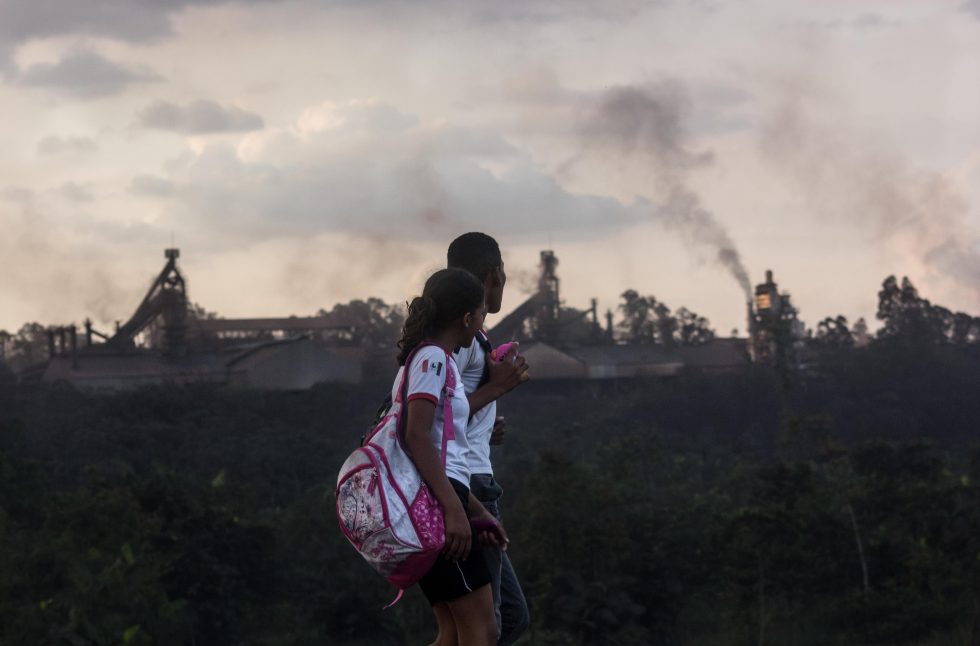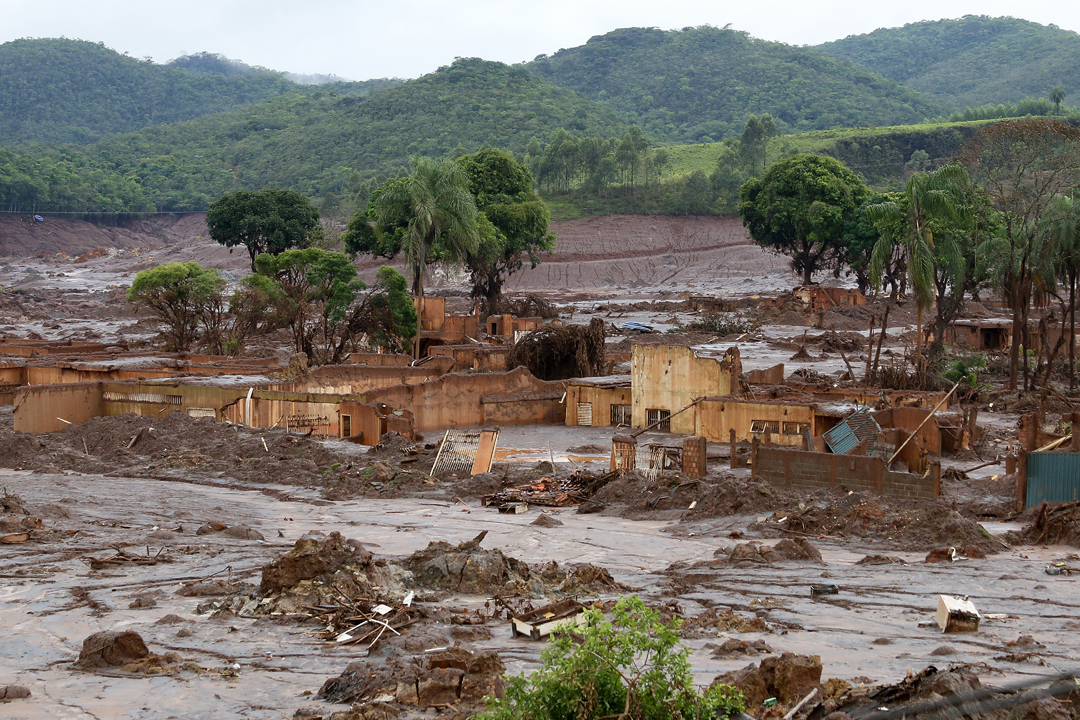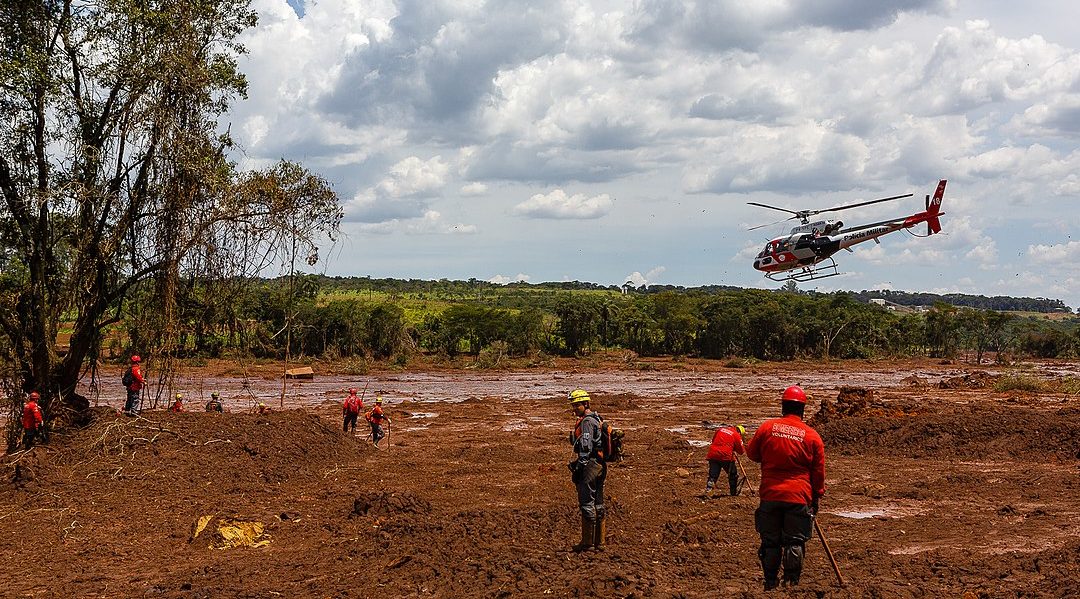This coming 25th of January, one year from one of the biggest social and environmental crimes committed by Vale S.A. mining company in Brazil will be completed. The dam connected to the Córrego do Feijão mine, in Brumadinho, state of Minas Gerais, burst killing at least 259 people already identified, as well as two unborn children, Lorenzo and Maria Elisa, who died in their mothers’ wombs. Eleven people are still missing.
The avalanche of about 12 million cubic meters of toxic mud that buried women, men, animals and vegetation also killed the Paraopeba River 40 km downstream from the ruptured dam, impacting native people and the fauna and flora from which they depend for their livelihood.
In 2015, Samarco, a subsidiary of Vale S.A. and Anglo-Australian BHP Billiton, had committed the same crime in Minas Gerais. The disruption of the Fundão dam in the municipality of Mariana killed 19 people and left a trail of destruction with 40 million cubic meters of toxic mud devastating animals, vegetation, communities, homes, the Doce River and part of the Brazilian coast.
Both Samarco and Vale S.A. knew beforehand of the real risk of the dams breaking, but they took no steps to avert the tragedies. So far, no one has been punished for either crime.
The indignation with impunity, with the connivance and omission of the State, and the mode of operation of mining companies in Minas Gerais led members of the Movement for the Mountains and Waters of Minas Gerais (MovSAM) to create the campaign “Brown January“. The goal of the campaign, according to Maria Teresa Corujo, a member of the movement and environmentalist, is to remember, throughout January, the crime of Vale S.A. in Brumadinho and make visible the role of the State and allies of mining companies that also are responsible for the crime.
In addition, there is a strong warning about: “mining that kills and haunts people, destroys communities and biomes, lives, fauna, flora, landscape, air and soil quality, springs, aquifers and rivers, and relentlessly advances over territories hindering other ways of living, violates rights and makes use of the most diverse strategies to take the population hostage”, adds Maria Teresa, who is also part of the Movement for the Preservation of Serra do Gandarela and SOS Serra da Piedade.
Alliance between Water for the People! Campaign and Brown January
During January, the Brazilian chapter of the “Water for the People” campaign will be linked to the “Brown January” campaign by publishing reports on this site about Vale’s crime and exclusive content on Twitter, Facebook and Instagram about Brumadinho and the resistance of peoples and communities to violations committed by mining companies. The tragedies of Mariana and Brumadinho show, in a superlative way, the daily tragedies of hundreds of Brazilian communities, such as Piquiá de Baixo (Açailândia / MA) and Santa Rosa dos Pretos (Itapecuru-Mirim / MA), violated for decades by Vale S.A and other corporations.

What is “Brown January” and how did it come about?
Brown January is an awareness and alert campaign, similar to Pink October or Blue November, which are now part of the annual national campaign calendar. It emerged in December from the idea of Guto who, along with other members of the Movement for Mountains and Waters of Minas Gerais (MovSAM), developed the initial plan that shared it with other activists for its realization.
What does the initiative consist of?
The initiative consists of a campaign through social networks based on the participation of organizations, movements and people who come together in a collective way to embrace and achieve their goal. Throughout January, material will be released with data, information, clarifications, reflections and relevant news about mining and its impacts on communities and environments and how the State has been silent or colluding. The campaign will also give visibility to acts, events and demonstrations related to the one-year milestone of the dam breakup on 25 January 2019, such as the 1st Archdiocesan Integral Ecology Pilgrimage in Brumadinho.
How can people, groups and entities support “Brown January”?
Supporting the campaign as is already happening with the use of a brown bow in profile photos on Facebook and logos of organizations and movements that already participate in Brown January. Following the @janeiromarrom campaign on Instagram and Twitter and sharing with friends, recording a campaign support video using the hashtag #janeiromarrom (max 1 minute), performing Brown January public actions in your township and sending photos / videos to be published (janeiromarrom@gmail.com) and following the blog posts of the campaign.
In what context was the campaign created?
Brown January was created because we are outraged by the impunity regarding the crimes of Samarco (2015) and Vale S.A. (2019) and the hegemony and power that mining has in Minas Gerais, despite the serious impacts and violations for decades. The truth is that for mining companies and most authorities, governments, municipalities, politicians and the judiciary, it is as if nothing had happened in Brumadinho. It is as if 272 people had not died (two babies died along with their pregnant mothers); as if the Paraopeba River had not been destroyed, damaging forever the water supply for thousands of people; as if in 2015 the Doce River and the ocean coast had not been impacted as they were; 19 people had not died; the environment of Bento Rodrigues and other communities had not been destroyed; the Krenak people had not lost their Watu River; and thousands of people suffered various types of losses.

We have been seeing the State repeatedly approving mining projects that include dams that are “time bombs”. For example, on December 20, 2019, at a meeting of the Chamber for Mining Activities (CMI) of the State Council for Environmental Policy, which lasted for 12 uninterrupted hours, an Operating License was granted for the Anglo American company to elevate the dam in Conceição do Mato Dentro (MG). The dam will hold about 300 million cubic meters of toxic residue, even with communities in the so-called Self-Rescue Zone (which we call the High Risk of Death Zone), something that the law known as the Sea of Mud Never Again Law expressly prohibits. The favorable legal opinion of the State Attorney General disregarded the recommendation of the State Prosecutor. Ten of the twelve counselors voted in favor of the license, in the face of the law.
The prospect of further disruption is very real, given the way the issue is being addressed, because no effective action is shown by the authorities. We have regions in Minas Gerais such as Itabira, Alto Rio das Velhas and Paracatu with tailings dams with a huge amount of people in their proximity. In Itabira there are about 10,000 people living in the Self-Rescue Zone of Vale’s 17 tailings dams and in the Upper Rio das Velhas there are more than 50 dams holding toxic waste that, if they were to break down, will contaminate the water supply of more than two million people in the metropolitan region of Belo Horizonte. The volume of some of them can destroy even the São Francisco River.
We are outraged, and we repudiate that the solutions given consist, for instance, in training people to save themselves (!) while allowing mining to continue operating dams and expanding mining complexes where these dams are included, not to mention new ones being licensed. We do not accept that the solutions are merely to place sirens, escape route signs and rendezvous points, while the status quo of mining continues as if nothing has happened and mining ventures continue to be licensed wholesale. And we still have what we call “dam terrorism” that has been used to evacuate people from the territories claiming risks that are not confirmed and still justifying major “emergency” works causing serious social and environmental impacts, built after the removal of the communities, which means that they are good for nothing, except for the expansion or building of new mines in these regions.
Hence the need to raise people awareness about mining and to bring out the truth about this extractive activity, that is almost like a black box because the industry shields itself and builds marketing strategies to deceive the population. Once most of the population knows what we environmentalists have known for years, what the communities around mining have been experiencing for years, all the suffering and all the impacts, we will have created a lot of social pressure to put against the wall these companies and authorities. Because all that we are experiencing in Minas Gerais is shameful, cruel and violent.
The original article is available here.
Cover picture: Mud “lake” created by Vale S.A. in Brumadinho (MG) in 2019. Company killed 272 people, including two unborn children. Photo: Diego Baravelli – CC BY-SA 4.0

